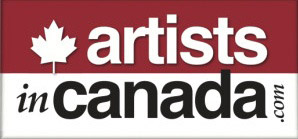
Stone Lithography: "etching" the image
Once the drawing is done you must "etch" the image so that the image remains on the stone. This is done with one ounce gum arabic and 8-12 drops of nitric acid, depending on the grease content of the drawing. The gum arabic alone will set up the water/grease relationship in the surface of the stone but adding drops of nitric acid will speed up the chemical reaction. Lithography is a PLANOGRAPHIC printmaking process. This means the image and the non-image areas are on the same plane, there is no physical difference in the image and non-image areas. The difference is chemical. When the etch comes into contact with just the limestone (non-image area) it chemically establishes a hydrophilic limestone, i.e. it loves WATER. When it contacts limestone and the grease in the drawing materials, it creates an oleophilic limestone, i.e. it loves GREASE. Grease and water don't mix so when you print your image, you first sponge the surface of the stone with water (not too much!), then you roll the grease based ink onto the stone using a leather roller. The water loving limestone repels the grease and the grease loving limestone accepts the ink.
0"h x 0"w ( 0 cm x 0 cm )
$

